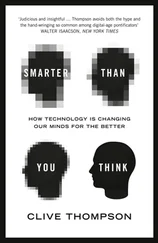Her bullheadedness can be traced to her East Coast upbringing: Protestant, hardworking, sporty, intellectual, liberal, but severe. Cold showers were a staple of her childhood. Hepburn said that her family “gave [her] the impression that the bitterer the medicine, the better it was for you,” and this strikes us as absolutely commensurate with her image on the big screen; never indulgent, always somehow utilitarian; only doing and using what was necessary. Ava Gardner you see in a big tub of bubbles, Hepburn in the Connecticut cold, standing in a bucket of ice water. Attributing to her childhood all her positive virtues, Hepburn always looked to her parents’ lives and relationship as the model for her own. Her mother, Katharine Martha Houghton, known as Kit, was a committed feminist and an early graduate of Bryn Mawr College, one of the first institutions to offer women a PhD. She was good friends with Mrs. Pankhurst, became the president of the Connecticut Women’s Suffrage Association and, in later years, was a vocal supporter of Planned Parenthood, despite giving birth to three boys and three girls. Her husband, Dr. Thomas Norval Hepburn, could trace his ancestry back to James Hepburn, Earl of Bothwell and third husband of Mary, Queen of Scots (whom Hepburn played in 1936, rather lumpenly. Later she recognized that fiery Elizabeth would have been more her bag). From him, Hepburn got her hair and her family nickname, Redtop, a great enthusiasm for all things physical and absolutely no understanding of feminine restriction. Dr. Hepburn made few distinctions between his sons and daughters. All of them played touch football, learned to wrestle, swim and sail and were encouraged in the idea that intellect and action are two sides of the same coin, for either sex. Her father was the kind of man Hepburn most admired: “There are men of action and men of thought, and if you ever get a combination of the two, well, that’s the top-you’ve got someone like Dad.” Born in 1907, two years after her parents’ first child, Tom, Hepburn grew up as a very jolly, tree-climbing, trouser-wearing, straight-talking tomboy, devoted to her older brother and awkward with people outside her family circle. When she was twelve a tragedy occured, one that changed her life and seems to have gone some way to forming the actress she became. During a trip to New York, Katharine and Tom went to see the play A Conneticut Yankee in King Arthur’s Court, in which there is a scene of a hanging. The next morning, when Katharine went into her brother’s room to wake him, she found him hanging from the rafters by a bedsheet, already dead five hours. He was fifteen. There was a history of suicide on both sides of the family, but her father always believed it a stunt gone wrong. Either way, Hepburn was deeply affected by it. She began to attempt to take on many of her brother’s traits, and in some way to replace him; she spoke of taking up medical studies at Yale, as he had intended to, and became involved in the sports he liked-golf and tennis and diving. Having no real academic ability, she never took that Yale place, but scraped through her exams sufficiently to follow her mother to Bryn Mawr. This college, often ridiculed for its supposed snobbery and bluestocking atmosphere, was where Hepburn began to act, and also-or so her later critics complained-where she picked up that unbelievable accent, that “Bryn Mawr twang,” with its Anglified vowels that combine oddly with the sense that one is being spoken to from a pinnacle of high-Yankee condescension. Her class and ambivalent femininity were to become central to Hepburn’s screen persona and were also the qualities that made her “box office poison” for the best part of a decade. Selznick’s reluctance to let her play Scarlett referred pretty obviously to her body, and we should begin with that. Her great love, Spencer Tracy, put it this way: “There ain’t much meat on her, but what there is, is choice.” And so it was. Slender without being remotely skinny, Hepburn was pretty much one long muscle, devoid of bust, but surprisingly shapely if seen from the back. She could work a dress like any Hollywood starlet, but your heart stopped to see her in a pair of wide slacks and crisp, white shirt. Her face was feline without being flirty, her cheekbones sepulchral but her lips full and generous. Her eyes-and there isn’t a movie star who doesn’t come down to the eyes in the end-had that knack of looking intelligently and passionately into the middle distance, a gaze that presidents strive for and occasionally attain. Her nose was more problematic. It struck some people as noble and full of sprightly character, but for a great deal of others it was too refined, hoydenish and superior. There are certain of her early films where a good 70 percent of the acting is coming from the nose down, and the average 1930s Depression-era moviegoer was not in the mood to be looked down upon through quite so straight and severe an instrument. They didn’t like her much as an aristocratic aviatrix in Christopher Strong (1933), and they liked her even less as an illiterate mountain girl in Spitfire (1934). But to really make them hate you, you might try spending an entire movie dressed as a boy and making Brian Aherne fall in love with you- while you are still dressed as a boy -and then have him say things like, “I don’t know what it is that gives me a queer feeling when I look at you,” as Hepburn did in the transvestite comedy flop Sylvia Scarlett (1935). The Shakespearean references were pretty much lost on her Depression-era American audience, who had other worries and were unwilling to allow much brain space to the homoerotic possibilities of Katharine Hepburn dressed in green suede. Time magazine took the opportunity to point out, “Sylvia Scarlett reveals the interesting fact that Katharine Hepburn is better looking as a boy than a woman.” There were hits during the 1930s, most notably Little Women, in which Hepburn played the greatest, most empathic and beautiful Jo March there ever has been or ever will be. But she was only playing good roles in hit movies-she could not yet carry a movie alone. Hepburn didn’t help herself, either, with her on-set behavior, which was noted and commented upon by the usual L.A. gossip columnists sent by the magazines to investigate the potential starlet. They had been spun a red-haired, East Coast, high-society goddess by the studios and so were somewhat surprised to find a makeup-free woman striding around between takes in a pair of dungarees. The RKO publicity department asked her to stop wearing them. She refused. The next day, when she found them vanished from her dressing room, she walked around set in her knickers until they were returned to her. On another occasion, when denying to reporters that she was married (she was, but very briefly, to Ludlow Ogden Smith, a man she met at a college dance) and asked whether she had children, she replied: “Yes, two white and three colored.”
It was around this time that Hepburn decided to return to the stage in a play called The Lakes and found herself on the receiving end of Dorothy Parker’s poisonous little put-down: “Katharine Hepburn ran the gamut of emotion from A to B.” In its way, this comment is true-Hepburn could not be stretched far beyond herself. But her triumph, like all the Golden Age actors, was to figure out that screen acting, in opposition to stage acting, has got nothing to do with range. The present-day enthusiasm for actors who can play anything from the severely disabled to the heroic to the romantic and so on, with their multiple accents and tedious gurning-this all meant nothing to Bogart or Grant or Stewart or, in the end, to Hepburn. It was by learning to play herself, and by continuing to do so, more or less, for the rest of her career, that Hepburn became a screen icon and a goddess.
Читать дальше
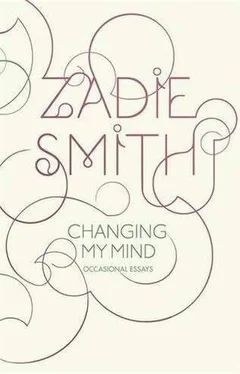
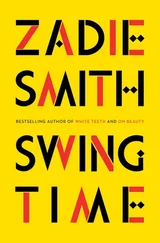


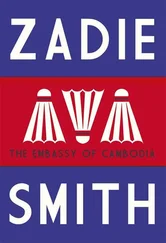


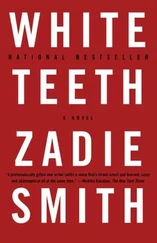
![Джон Харгрейв - Mind Hacking [How to Change Your Mind for Good in 21 Days]](/books/404192/dzhon-hargrejv-mind-hacking-how-to-change-your-min-thumb.webp)


